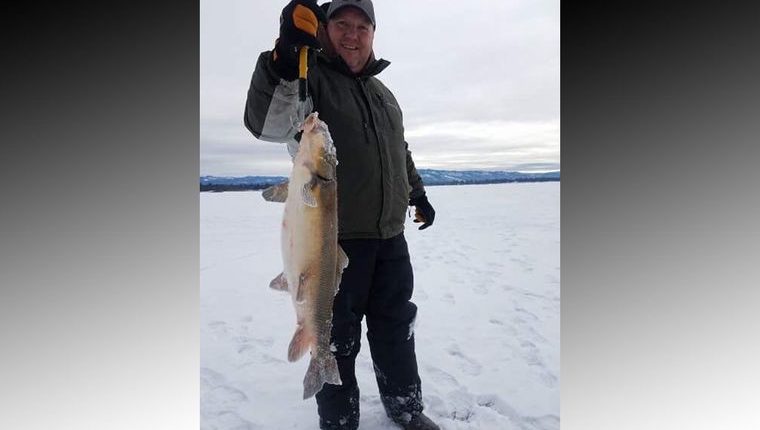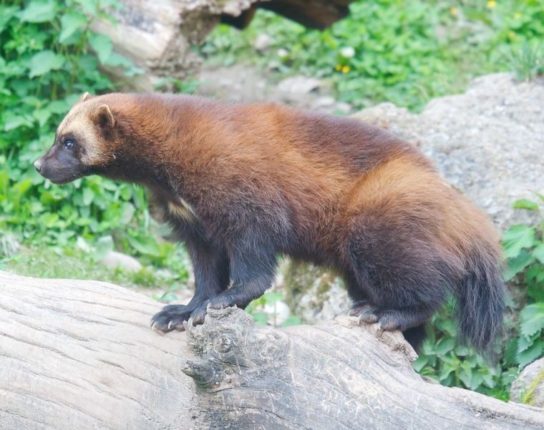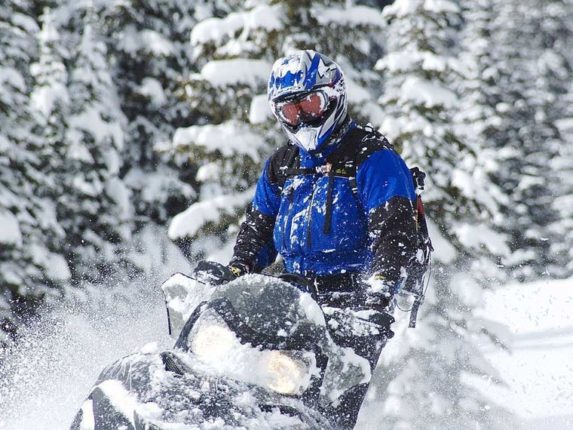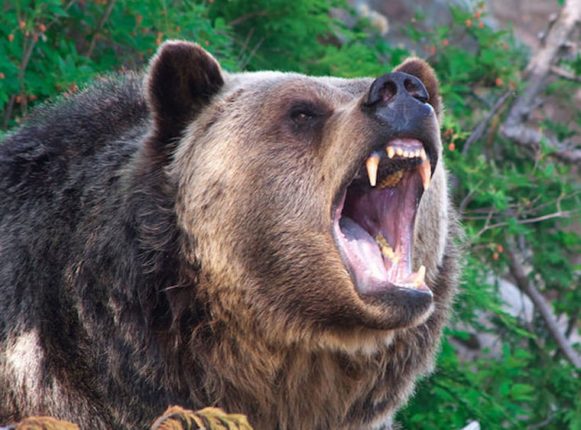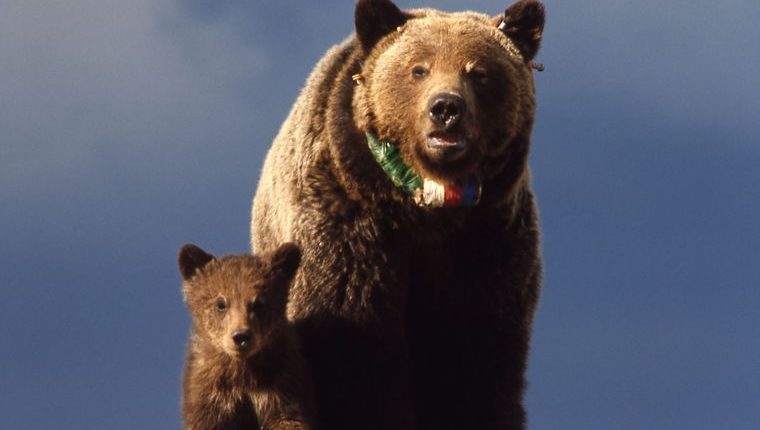CODY, Wyoming — When the 750-pound charging grizzly ran over Tammy Copson, the impact hurled her into the air.
“It felt like a bus hit me,” she said. “I bounced when I hit the ground.”
And then things got worse. The monstrous bear loomed over her, opened its jaws and chomped down on the side of her head.
“I could feel the pressure of it biting me,” Copson said.
Her mind raced. “Oh, no, oh God, please don’t kill me,” she thought.
She was terrified this far-fetched scenario could end her life.
Copson, 52, of Acworth, Georgia, came to Wyoming in late October for an all-women’s elk hunt with Boulder Basin Outfitters. It was a horseback trip in the rocky terrain above Wapiti on the outskirts of Cody.
Accompanied by guide Jon Sheets, 46, also severely injured by the bear that blindsided them while he was field dressing the elk that Copson had shot, Copson until now has remained silent about what happened that evening.
Sheets, of Powell, was flown by helicopter to a hospital in Billings, Montana, for treatment of multiple wounds.
Copson was ferried by a different helicopter to a hospital in Idaho Falls, bleeding from the head and left leg.
Copson and Sheets were two of five people injured by bears in Wyoming this year.
Both spent days in hospitals. Both were sent home for recuperation. Both have returned to the hospital for additional surgery and have more scheduled.
They shared one of the most frightening experiences humans can have in the wild, but they had not yet shared notes of what went through their minds and how they have coped since, the Cody Enterprise reported.
Survival is the first goal in such a dangerous situation, and the aftermath means processing what you have been dealt by such a powerful creature.
As the bear dragged her a few dozen feet from Sheets, Copson thought, “Please, Lord, don’t let me die.”
Copson lives about 30 miles from Atlanta, and she and her fiance, Keith Whatley, hunt whitetail deer and turkeys.
He got her started in hunting a couple of years ago. A friend signed up for the all-women’s elk hunt, and Copson joined her.
“This was a chance of a lifetime,” Copson said.
There had been shopping and admiring the scenery before the hunt began on her first visit to Wyoming.
“It was beautiful country, and I loved it,” she said.
The hunt began Oct. 25. On the fateful day, the group of five hunters, plus guides, scouted for elk in the high ground. None of the elk seen were close enough for a shot.
As darkness closed in, the decision was made to return to camp. Copson and Sheets were together on horseback when they spied 10 or 15 elk in a ravine, as Copson remembers.
After dismounting, she aimed her .308 and fired from 280 to 300 yards. The first shot missed the target completely, yet the elk did not flee.
“It actually didn’t move,” Copson said.
The second shot was true, and the elk fell. The remaining elk “just moseyed off,” she said.
Copson and Sheets descended, and she took a few photographs. Wow, she had an elk. She was thrilled. Sheets radioed camp to report the kill and declined an offer to help dress it.
As the sun hid behind the hills, they put headlamps on. Sheets was on his knees, wielding a 7-inch knife on the elk. Copson assisted, pulling the legs apart.
They were in bear country at a time of year when bears are trying to stockpile calories for winter hibernation, so there was always the threat a bear might intrude.
Sheets told Copson to say, “Go away, bear” as loud as she could.
However, the next thing she uttered was, “Bear!” in a yell.
There was no time for evasive action. The grizzly storming out of the dusk was so fast Copson was caught flat-footed.
The bear steamrolled her, then grabbed her by the left thigh and tried to turn her over. She fought to remain on her belly. The bear dragged her away from Sheets over a dip in the terrain so he and the elk were out of sight. In the struggle, her headlamp came off leaving her in the dark with the bear.
“I thought, ‘Please don’t let this be real,'” Copson said, repeating her primary emotion was terror. “I don’t want to die like this.”
The bear gnashed at her leg with claws or teeth or both, creating a river of blood.
“I didn’t go into a full panic,” Copson said. “I told myself to stay tucked as tight as I could.”
Then the bear abandoned her.
Copson, who could not stand, began crawling uphill and when she crested the top, she saw Sheets silhouetted by his own headlamp, wrestling with the bear.
“I could see him being tossed around,” Copson said.
She did not realize Sheets was stabbing the bear with the field knife.
The sharp blade made little more impact on the thick-coated, huge animal than a spoon would have. The bear dropped Sheets, smashed his left arm and jumped up and down on his back.
Then the grizzly grabbed the elk carcass and dragged it off, right over Sheets’ back. It got what it came for.
Both bloodied and hurting, guide and hunter sought to regroup.
“I thought it was coming back after me,” said Copson, who did not see the bear steal the elk.
Sheets broke the quiet by saying, “Tammy, are you OK?”
She said, “No, I thought it was tearing my head off.”
Sheets said Copson was worried about going blind, perhaps because of the blood from her head and another cut on her face, but she has no memory of saying that. He said she dropped the radio, but she doesn’t remember ever having it.
A handgun Sheets set aside while processing the elk was never within reach during the tussle. Scared the bear would return, Copson demanded to hold it for protection.
“Thank goodness that bear didn’t come back,” she said.
Between the stress and danger during the bear assault, Sheets said he did not remember everything clearly during the bear assault.
Once the duo rode into camp, with some aid from guides ascending to meet them, medical help was summoned.
“I was in horrible pain,” Copson said. “I could not walk. My head hurt, but my leg hurt the most. I was screaming that it was torn to pieces.”
Copson has a 4-inch scar where she received stitches in her head. She has a 2-inch scar above her right eye and took so many stitches in her leg the medical people told her they didn’t count.
Despite the injuries, Copson knows she is fortunate.
“Oh, gosh, it could have been worse,” Copson said. “It could have killed me or torn my face off.”
Copson uses a walker to get around. She said no date has been set for her wedding with Whatley and she absolutely will walk down the aisle under her own power.
Sheets is anxious to hunt again. Copson is not so sure she will.
“Probably,” she said, thinking of whitetail deer and turkey near home. “When next year comes around I’ll see how I feel about it. I will not go where there are grizzlies.”





